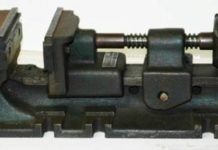SIGNIFICANCE OF FLUDITY
Fluidity of molten metal helps in producing sound casting with fewer defects. It fills not only the mold cavity completely and rapidly but does not allow also any casting defect like “misrun” to occur in the cast object. Pouring of molten metal properly at correct temperature plays a significant role in producing sound castings. The gating system performs the function to introduce clean metal into mold cavity in a manner as free of turbulence as possible. To
produce sound casting gate must also be designed to completely fill the mold cavity for preventing casting defect such as misruns and to promote feeding for establishing proper temperature gradients. Prevent casting defect such as misruns without use of excessively high pouring temperatures is still largely a matter of experience. To fill the complicated castings sections completely, flow rates must be high but not so high as to cause turbulence.
It is noted that metal temperature may affect the ability of molten alloy to fill the mold, this effect is metal fluidity. 1t include alloy analysis and gas content, and heat-extracting power of the molding material. Often, it is desirable to check metal fluidity before pouring using fluidity test. It illustrates a standard fluidity spiral test widely used for cast steel.
“Fluidity” of an alloy is rated as a distance, in inches, that the metal runs in the spiral channel. Fluidity tests, in which metal from the furnace is poured by controlled vacuum into a flow channel of suitable size, are very useful, since temperature (super-heat) is the most significant single variable influencing the ability of molten metal to fill mold.
This test is an accurate indicator of temperature. The use of simple, spiral test, made in green sand on a core poured by ladle from electric furnace steel melting where temperature measurement is costly and inconvenient. The fluidity test is same times less needed except as a research tool, for the lower melting point metals, where pyrometry is a problem. In small casting work, pouring is done by means of ladles and crucibles. Copied from A Textbook of a Basic Manufacturing Processes and Workshop Technology by Rajender Singh.














